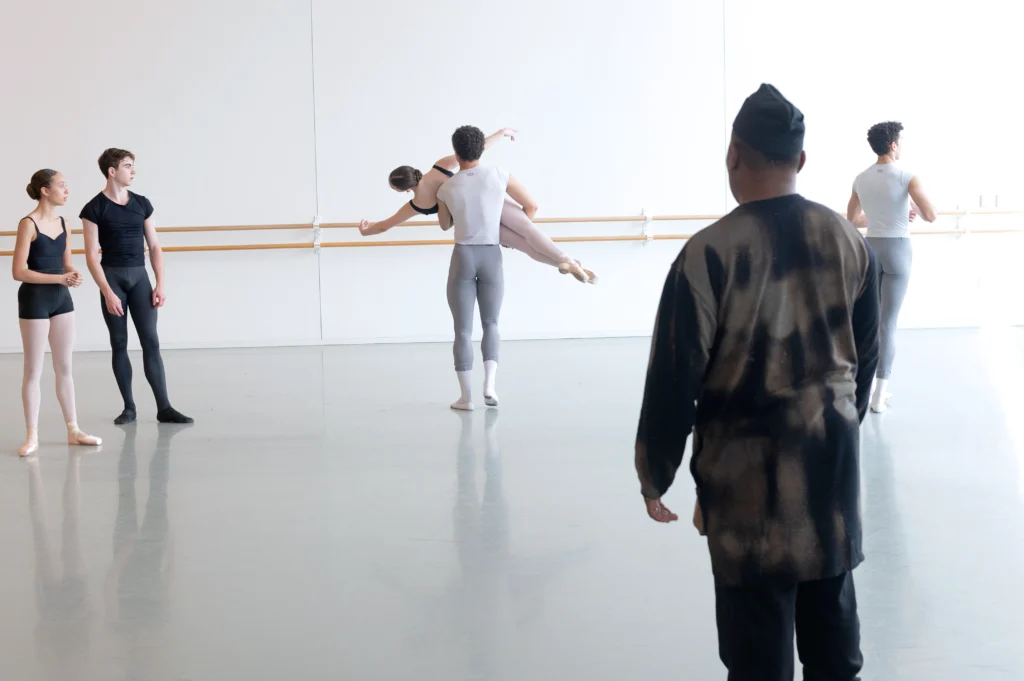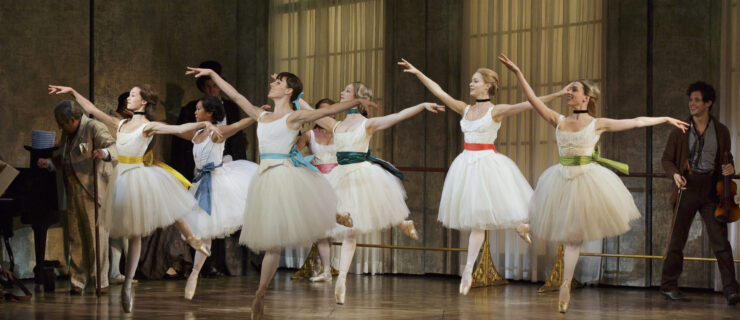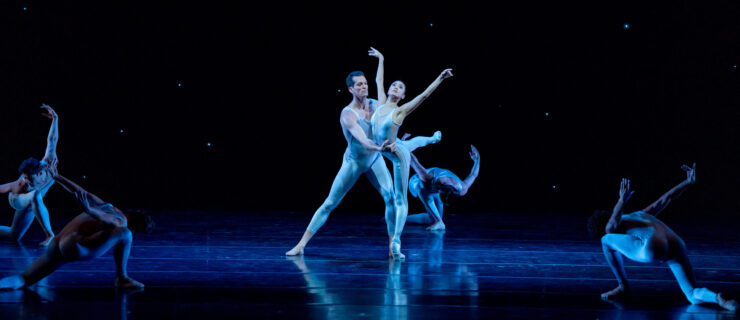Houston Ballet II Joins Team of Renowned Artists for Can We Know the Sound of Forgiveness
The young dancers of Houston Ballet II charge through the studio, filling out the contours of Harrison Guy’s intricate choreography and riding the driving rhythms of Gabriela Ortiz’s score with momentum and urgency. The 18 dancers are rehearsing for a one-of-a-kind, multidisciplinary performance event called Can We Know the Sound of Forgiveness. The work, co-commissioned by Shepherd School of Music at Rice University and Carnegie Hall, premieres on January 20, 2024, at the university’s Morrison Theater in Brockman Hall.
Inspired by visual artist James Drake’s drawing of the same title, the performance evokes themes of human suffering, isolation, immigration, violence, war, healing, and more through music, visuals, spoken word, and dance. (Drake’s monumental drawing is currently on view at Houston’s Moody Gallery through February 24.)
The dancers join an impressive creative team that, in addition to Guy and Ortiz, includes writer Benjamin Alire Sáenz, performance artist Shaun Leonardo, flutist Alejandro Escuer, Grammy-winning chamber choir The Crossing, and producer/director Stephen Jiménez. It is also Houston Ballet Academy’s first collaboration with the Shepherd School of Music.

The project, three years in the making, evolved from a conversation between Jiménez and Drake, who imagined the drawing expanding to a full-blown performance event. Houston Ballet got involved through its connection to Ucross Foundation, an artist residency in Wyoming where Jiménez has served as vice president. Former HB star Lauren Anderson, who has a studio named after her at Ucross, suggested Jiménez hire Guy to choreograph the work’s dance sections. Guy, who is founder and director of Houston’s Urban Souls Dance Company, has connections to both the ballet company and the university. He co-choreographed the dance-theater piece Plumshuga: The Rise of Lauren Anderson alongside HB artistic director Stanton Welch, and has served as artist in residence at Rice’s Center for Engaged Research and Collaborative Learning.
Guy finds the title’s question (“Can we know the sound of forgiveness?”) both curious and provocative. “It’s such a grounding question, it’s personal,” he says. “Who is forgiving and for what? So much has happened to so many communities that it can be an ongoing question for all kinds of people.”
Even though Drake’s gestural drawing serves as a potent visual, Guy sees dance as essential in the mix. “Physical bodies are a direct storytelling mechanism,” he says. “I was drawn to the humanity of the project, what it means to forgive for violence and war. Healing is the most important part of the piece, connecting that thread of community.”
It takes a team to participate in an endeavor of this scale: Anderson is serving as the project’s guest creative advisor, with former HB first soloist Kelly Myernick as supervising teacher. Dwayne Cook, a former Urban Souls dancer and Houston Ballet teaching artist, is serving as Guy’s choreographic assistant.
Because Guy was brought in later in the process and had a limited time to work with HB II, he used a ballet-based vocabulary that the dancers could immediately access. “I included some improvisational elements, enough to feel that they contributed to the piece.”

For first-year HB II dancer Yeva Hrytsak, originally from Ukraine, the project has been life-changing. Although Hrytsak left Ukraine before the war started, she can relate to the themes in this piece. “For me, it’s about the responsibilities we all carry,” she says. “We remind people to be responsible to those around us and the environment.”
The dancers share the stage with the renowned performance artist Shaun Leonardo and get a rare chance to speak onstage. Houston Ballet Academy brought in acting coaches to help them hone these skills. “We are learning how to speak in a way that people want to listen to you,” says Hrytsak.
Myernick sees several learning opportunities for the dancers. “A recurring theme is ‘Mean what you say,’ ” she says. “This lesson holds value in the way the dancers use their voices and also how intentional they can be in their movement. They are learning artistic responsibility, that every step can have meaning for you and, most importantly, for the audience, when you are truly thoughtful about your work.”

The experience of working among high-caliber artists and tackling the gravitas of the work’s potent themes has given the HB II dancers a glimpse of their future lives as artists.
“This project has really made me grow,” says Hrytsak. “I am finding something deep in my dancing. Every time I dance this piece I gain more of the meaning behind the movement. It has expanded my mind and body. I can’t wait to be onstage with all these artists—it’s such an honor.”




